41 free things to do in Rio de Janeiro: tips from a local
You might have heard that Rio is one of the most expensive cities in Brazil, but the most beautiful as well. For those on a tight budget, the good news is that there are plenty of free things to do in Rio de Janeiro for all tastes. Besides the famous beaches there are interesting museums, hikes with breathtaking views, parks, street markets, open-air music performances…
I’m a Brazilian who has been living in Rio for a few years, but before moving here I used to come as a tourist and search for all the free activities I could find. Once I came to spend a whole month with the personal challenge of only doing free stuff. During those 30 days I went exploring every day and never got bored. Even with a packed itinerary, I couldn’t tick everything on my list of free things to do in Rio.
Here are some of the free activities I have tried back then and that I love doing now that I live here:
Free things to do in Rio de Janeiro
1. South Zone (Zona Sul) Beaches
Starting with the obvious—Rio’s most famous beaches, which sure are stunning. Any time of the year, it’s worth at least passing by the beaches at Zona Sul (South Zone). The views of Ipanema, Copacabana, and Leblon are not only iconic but truly beautiful.
If you want a chair or umbrella you do have to pay, but you can bring your own beach towel (or “canga”, which is like a sarong), book, water, and some snacks, and enjoy relaxing on the sand. Or take a walk or jog along the boardwalk — a classic and one of the best free things to do in Rio de Janeiro.
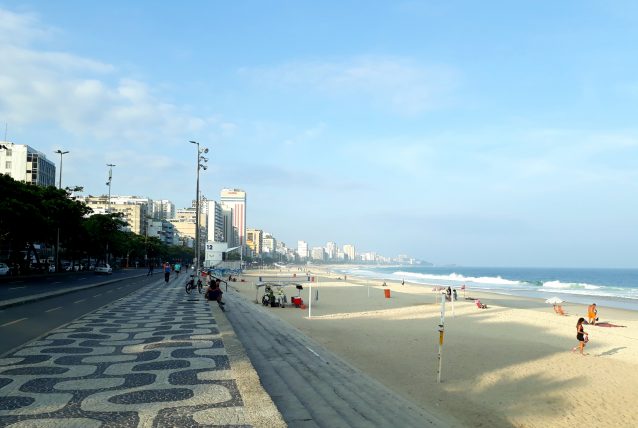
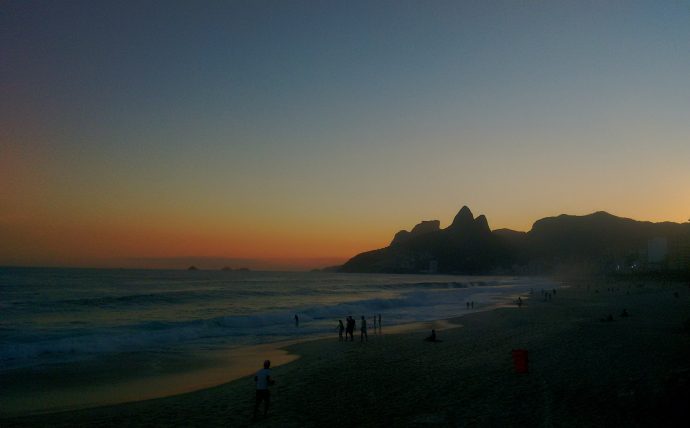
2. Sunset at Arpoador
This could also be under “South Zone Beaches” topic, but it deserves its own mention. Watching the sunset at Pedra do Arpoador is one of my favorite Rio traditions. The big rock at the end of Ipanema Beach feels like it was made to serve as a natural viewpoint.
Tourists and locals gather to watch the sky turn pink, like a painting. On weekends, it’s worth arriving a bit early to find a good spot. And as the sun goes down, there’s often live music or street performers nearby.
Want to stay in Rio de Janeiro for free? Volunteer here through Worldpackers! This platform offers opportunities to exchange your time and skills for accommodation and other benefits, like meals and tours. There are dozens of volunteer positions in Rio, both in the capital city and other parts of the state. You can browse them for free. When registering, use the coupon JANELASABERTAS for a 20% discount.
3. West Zone (Zona Oeste) beaches
Does this mean Rio beaches are limited to the South Zone? Not at all! The Zona Oeste (West Zone), home to neighborhoods like Barra da Tijuca and Recreio dos Bandeirantes, has a coastline quite different from the iconic Rio images we’re used to seeing.
With much more recent urbanization, this area has many well-preserved nature areas. The beaches here have a “wilder” vibe and tend to be much less crowded than Copacabana or Ipanema.
Check out Joatinga Beach, Pepê Beach, Barra da Tijuca Beach, Reserva Beach, Recreio Beach, Pontal Beach, Macumba Beach, Piscina Natural do Secreto, Prainha, Abricó (a nudist beach), and Grumari Beach.
Further away are the so-called “wild beaches”: Meio, Funda, Inferno, and Perigoso. To get there, head to Barra de Guaratiba and take a moderate hike. I went to Perigoso Beach and couldn’t believe I was in one of the country’s largest cities – it feels like you’ve traveled somewhere much more secluded.
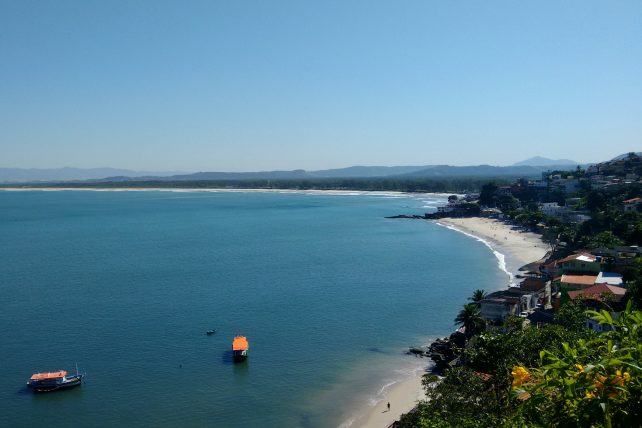
4. Royal Portuguese Reading Room
Enjoying a beach day in Rio is awesome, but if you think Rio is all about beach vibes, think again. Rio’s downtown area has tons of interesting attractions, and you can enjoy most of them for free.
One beautiful spot is the Real Gabinete Português de Leitura (Royal Portuguese Reading Room). This building, built in the 1880s, houses a vast collection of Portuguese literature spread across three floors.
Even if you’re not into books, don’t miss it—the library is stunning. The well-preserved space feels like a movie scenario.


5. Museu do Amanhã
“Tomorrow is today. And today is the time for action.” I believe this phrase I saw at the Museu do Amanhã (Museum of Tomorrow) gift shop sums up its mission well. The museum aims to inspire visitors to build a better future.
Through audiovisual installations, interactive exhibits, games, and touchscreen displays, it presents various data on our past, present, and future, focusing on environmental preservation.
Located at Praça Mauá in downtown Rio, the museum offers free entry on Tuesdays. It tends to get crowded on that day, so it’s good to arrive early.
You might also like to read:
Where to stay in Rio de Janeiro
What to do in Rio when it rains
How to learn Brazilian Portuguese
Brazil travel tips: Insider advice from a local nomad
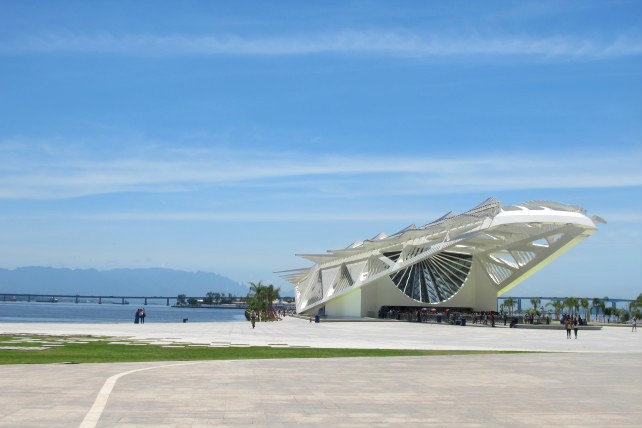
6. Other Museums with Free Entrance
Many other museums in Rio offer free entry once a week. It’s the case of Roberto Marinho House, a mansion in the Cosme Velho neighborhood with a garden designed by famous Brazilian landscaper Burle Marx, and the Chácara do Céu Museum in Santa Teresa, both free on Wednesdays. For other museums, check their websites before planning your itinerary.
7. Little Africa
This is not one specific attraction but a region that sheds light on Rio’s history of slavery. Known as Pequena África (Little Africa), it includes the port area and neighborhoods like Saúde, Gamboa, and Santo Cristo.
You can explore it on a guided tour or on your own, although you’ll miss out on the context. Key stops on this route include Largo de São Francisco da Prainha, Pedra do Sal, Valongo and Imperatriz Docks, the Hanging Gardens of Valongo, and the Cemetery of New Blacks.
Want to go with a guide? Check out the Rio Afro Culture + Samba in Pedra do Sal Free Tour. This isn’t really free, but you pay what you think it’s worth.
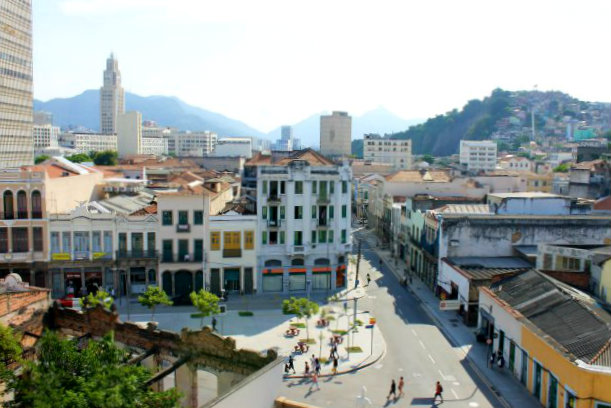
8. Mosteiro de São Bento
Founded in 1590 by Portuguese monks from Bahia, the Mosteiro de São Bento (São Bento Monastery) is a historical site where you can visit the Church of Our Lady of Monserrate, one of the most valuable 17th-century heritage sites preserved in Brazil. The church’s interior is almost entirely gilded, with stunningly intricate details.

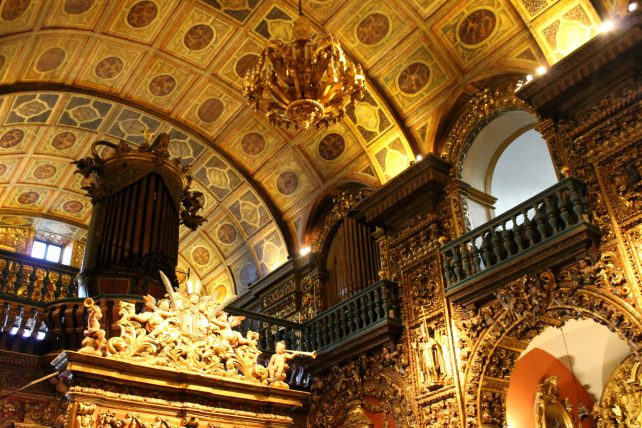
9. Paço Imperial
The Paço Imperial (Imperial Palace) once served as the residence of governors and viceroys, the kingdom’s headquarters, the administrative center of the Empire during the First and Second Reigns, and a government office in the Republican period. In 1938, it was designated a National Historic and Artistic Heritage site, and in the 1980s, it became a cultural center.
There, you’ll find a permanent exhibition detailing the building’s own history, as well as temporary exhibits of painting, photography, and other arts. The space also includes a bookstore, restaurant, and more. Entrance is always free.
10. Museu Histórico Nacional
Another historic building transformed into a museum is the Museu Histórico Nacional (National Historical Museum). It operates in what was once the Santiago Fortress, built by the Portuguese in 1603. Established in 1922, the museum holds over 250,000 items.
It features a long-term exhibition on Brazilian history, with sections like “Nation Building” and “Citizenship in Construction,” inviting reflections on our role in history. Additionally, it hosts temporary exhibitions; when I visited, there was a fascinating exhibit on “Rio and the Sea.”
The building also has pleasant courtyards, a garden, and a restaurant. Admission is currently free, but they might start charging again, so check their website.
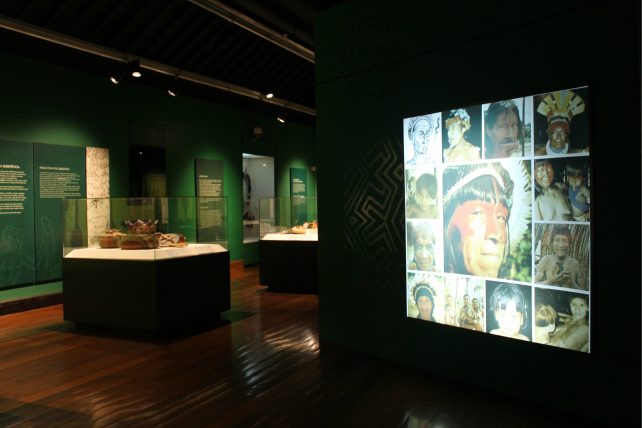
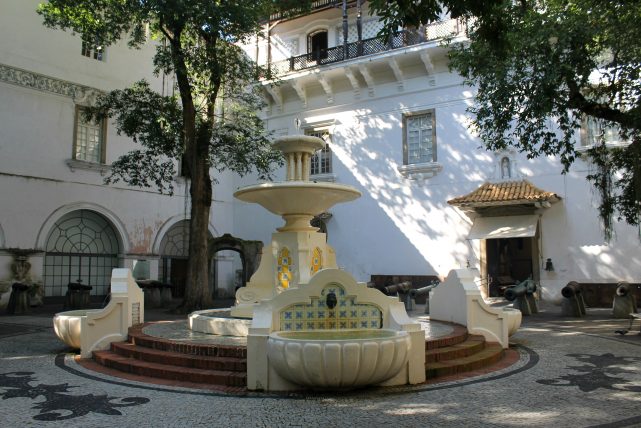
11. Caixa Cultural
Continuing with cultural stops in downtown Rio, check out the free exhibitions and debates at Caixa Cultural, located in the Passeio Corporate building, at Rua do Passeio, 38. I’ve seen some pretty cool exhibitions there, and also took part on some arts workshops, all for free.
12. Centro Cultural Banco do Brasil
Another must-visit, always with free admission, is the Centro Cultural Banco do Brasil (Banco do Brasil Cultural Center), housed in a neoclassical building from 1880. The former bank headquarters includes galleries, a theater, cafés, and a library. The program is very diverse—I’ve seen some fantastic exhibitions there too. Free tickets can be obtained at the reception or on the CCBB RJ website. Nearby is the Church of Candelária, which is also worth visiting.

13. Centro Cultural dos Correios
Other cultural center worth visiting is the Centro Cultural dos Correios (Post Office Cultural Center), which operates in a beautiful building inaugurated in 1922. Across its three floors, you’ll find a theater, an art gallery, and various exhibition rooms. Check the program on their website.

14. Saara
Tired of cultural activities? Then head to Saara, the city’s bustling shopping district. Made up of 11 streets around Rua da Alfândega, this open-air shopping center features about 800 stores.
Here, you’ll find clothes, toys, fabrics, decor items, and more, all at affordable prices. Even if you don’t plan to buy anything, it’s always fun to walk around and take in the lively local vibe.
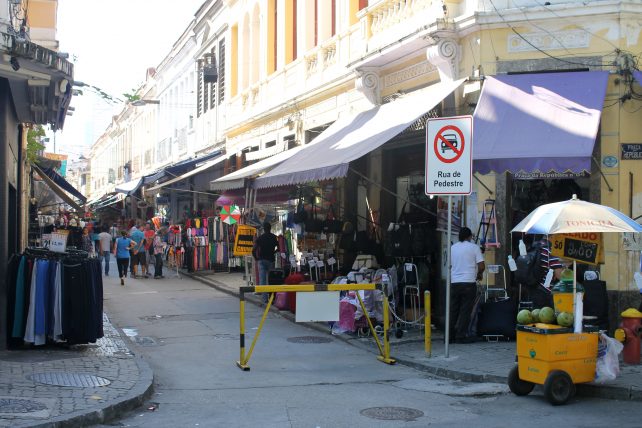
15. Confeitaria Colombo
I hesitated to include Confeitaria Colombo here, since to truly enjoy it, you’ll need to spend some money. But this fancy café/bakery/restaurant is so beautiful and iconic that it’s worth a visit, even if you don’t eat anything.
Founded in 1894, it has been named one of the most beautiful cafes in the world. The architecture and ambiance transport you to Rio’s Belle Époque.
There’s a restaurant on the first floor, and there’s also a branch of the same café at the Copacabana Fort.
16. Other attractions in Downtown Rio
There are plenty of other interesting places around Downtown Rio, such as the Espaço Cultural da Marinha (Navy Cultural Space), the Casa França-Brasil, the beautiful Teatro Municipal (Municipal Theater), and the Museu de Arte Moderna – MAM (Museum of Modern Art). Most have free entry on at least one day of the week.
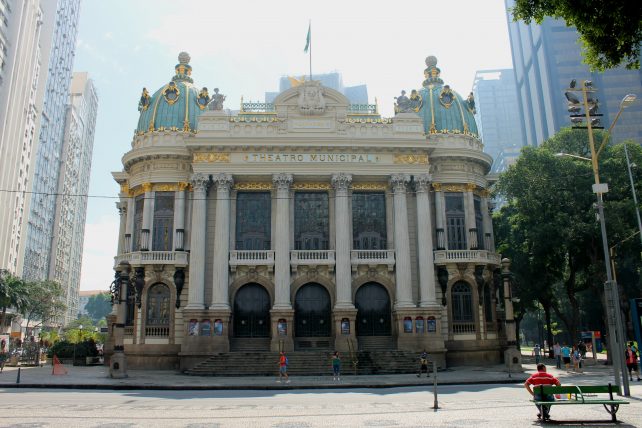
17. Santa Teresa
For those up for a walk and enjoying a peaceful vibe near the hustle and bustle of the city center, the Santa Teresa neighborhood is a great choice. It’s one of my favorites among the free things to do in Rio, as the charm of its streets alone is worth the visit.
If you’d like to learn about the history behind each corner, consider a free tour of Santa Teresa.
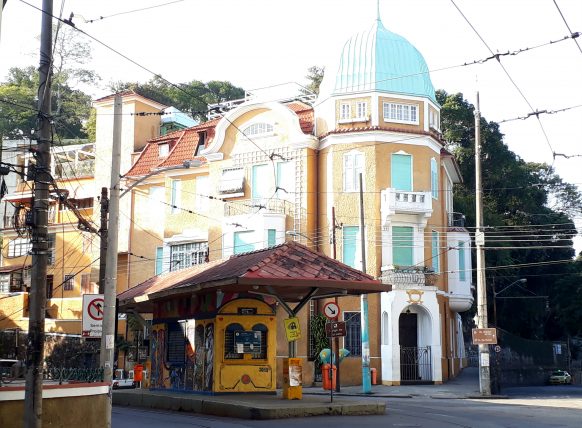
But strolling by yourself is also fun. The neighborhood is full of art galleries, restaurants, and bars. It’s also worth visiting the Parque das Ruínas, where an art gallery is set up around the ruins of an old mansion with a café and a beautiful view.
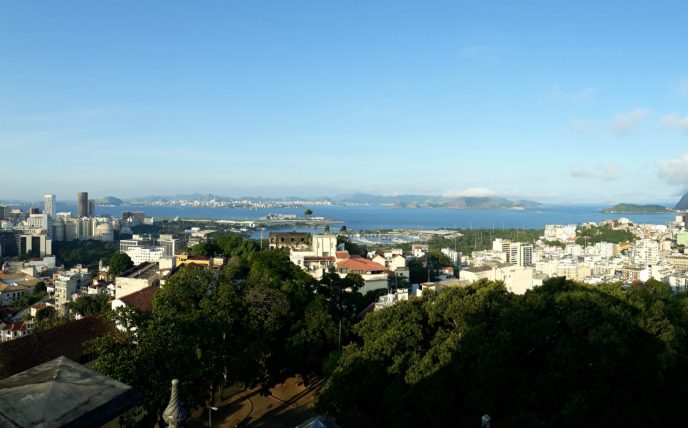
To get there, you can take the historic bondinho (tram), which departs near Carioca subway station, or walk up from Lapa.
If you choose to walk, take the opportunity to explore Cinelândia, check out the Arcos da Lapa (Lapa Arches, in the photo below), and enter the neighborhood via the famous Selarón Steps. I love this area (I even live nearby) but it’s good to be extra careful with your valuables around there.
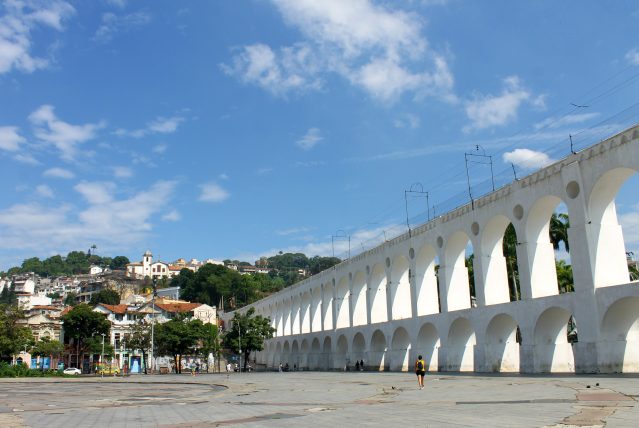
18. Parque Lage
If you love peaceful, romantic spots, you’ll be enchanted by Parque Lage, in the Jardim Botânico neighborhood. Full of greenery, this park houses a Visual Arts School and is known for its beautiful mansion with a pool-like lake in the center, framed by the Christ the Redeemer in the background—a perfect photo op. It’s become so popular on Instagram that now you need to reserve a free ticket in advance to enter the mansion. It can get crowded during high season.
Many people go for breakfast at the café in the mansion, enjoying the vibe and view. If you have time, take the chance to explore the park itself. It has small trails, ponds, ruins, and even a grotto with stalactites. Don’t forget bug spray, specially if you’re there in late afternoon.
Short on time or prefer a guided tour? Check out this tour covering Parque Lage, the Botanical Garden, and Tijuca Forest.

19. Largo do Boticário
In terms of “charm,” another of my favorite free things to do in Rio is visiting Largo do Boticário, tucked away in the Cosme Velho neighborhood. It’s essentially a small square with beautiful old house facades and a stream running beside it. There’s not much to do there other than look, but I love the feeling of being transported back in time.
When I first visited, this charming little corner was rather abandoned. In 2018, a law allowed the restoration of the space for new uses, provided the original architecture was preserved. In 2022, a trendy hotel called Jo&Joe opened there, which also hosts events and has breakfast available for non-guests.

20. Mirante Dona Marta
Don’t want to go to Largo do Boticário just to see it and then head elsewhere in the city? Combine it with a stop at the nearby Mirante Dona Marta.
This viewpoint offers one of the most incredible views of Rio, from 360 meters up. You can see the Christ, Sugarloaf, Guanabara Bay, and other iconic landmarks.
You can’t get there by public transportation, and walking up isn’t recommended. You can drive up and park your car, but if you go by taxi or Uber, I suggest asking the driver to wait, as it’s often hard to call for a ride back from there.
Many people go to Dona Marta to watch the sunrise, which provides a stunning view and amazing photos. However, this is not officially permitted, and local guides have informed me it’s not recommended because the early activity disturbs the animals living there.
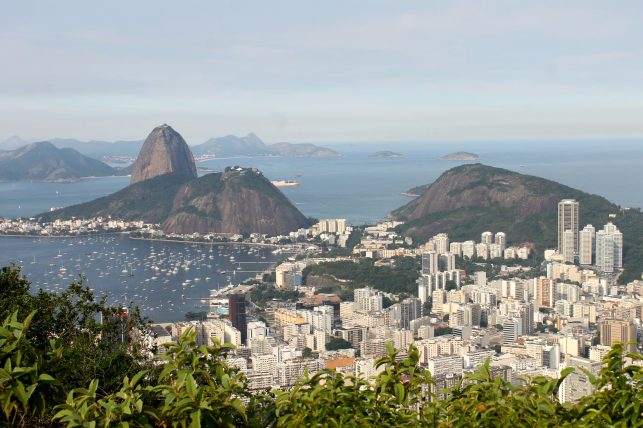
21. Mirante do Pasmado
Another nice viewpoint, though with a less striking view, is Mirante do Pasmado. Located in the Botafogo neighborhood, it’s not well-known even to locals. Although it’s surrounded by dense vegetation that partially blocks the view, you can still see Botafogo Beach, Sugarloaf, and Corcovado.
The climb is steep but paved. You can go up by car/taxi or on foot, but if you walk, watch out for safety and traffic since there’s no sidewalk.
Recently, the Holocaust Memorial was created there, which I haven’t visited yet. Currently, Yitzhak Rabin Park (the monument’s exterior area, where the viewpoint is) is open daily from 8 a.m. to 10 p.m., and the permanent memorial exhibition runs Thursday through Sunday, from 10 a.m. to 6 p.m. (last entry at 5 p.m.).
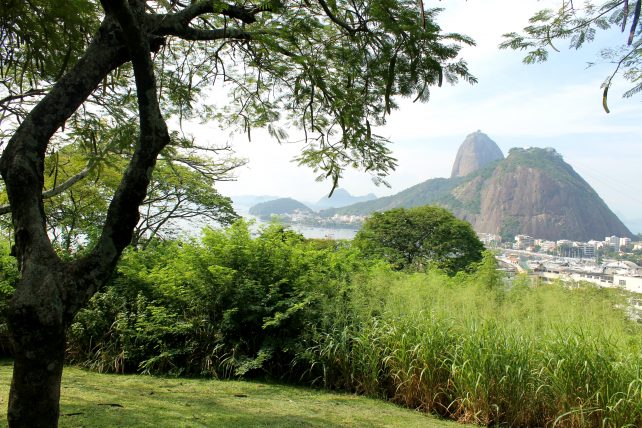
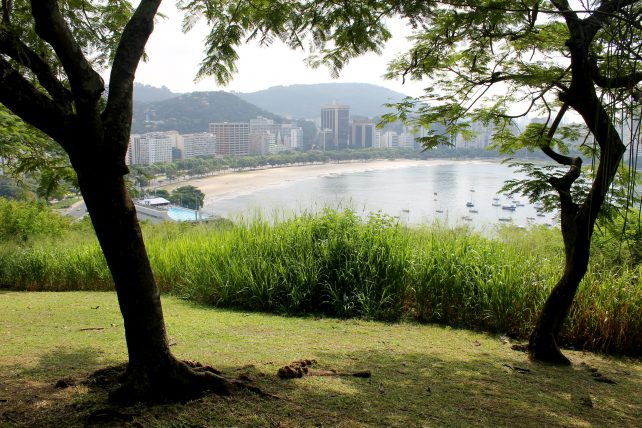
22. Forte do Leme
Since we’re talking viewpoints, here’s another that many people overlook, even though it’s in a popular area: Forte do Leme, also known as Forte Duque de Caxias.
It’s located on Morro do Leme, at the end of Leme Beach, and is accessible on foot. The path to the top is paved and steep, but it only takes about 20 to 30 minutes to reach the reward.
On one side, you get a beautiful view of Leme and Copacabana beaches and Corcovado. On the other, you can admire Guanabara Bay, Sugarloaf, and other hills. Entry is quite cheap, and free on Tuesdays.
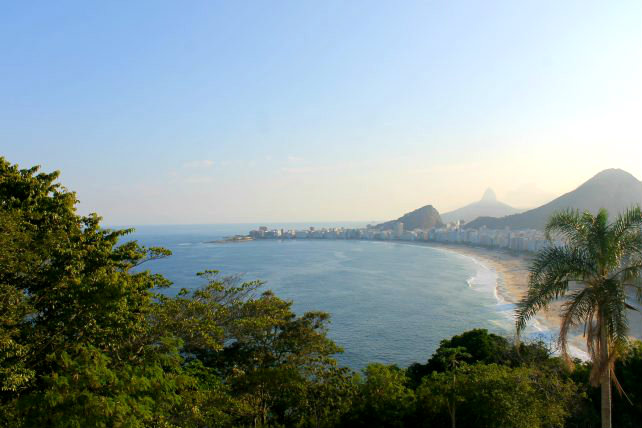
23. Parque Penhasco Dois Irmãos
Another viewpoint often unknown to tourists is Parque Penhasco Dois Irmãos, in Leblon. It has several lookout points with stunning views of Leblon and Ipanema beaches, Rodrigo de Freitas Lagoon, and other key spots in the city.
It’s about a 20-minute walk to the first viewpoint, which I found the most beautiful. Further down, near the beach, it’s worth checking out the Mirante do Leblon, with food and drink kiosks open day and night.
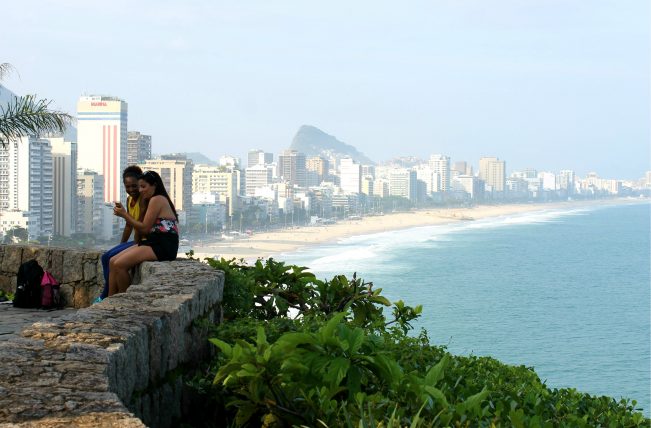
24. Hikes
Another awesome “category” of free things to do in Rio is exploring nature. Tijuca Forest is one of the largest urban forests in the world and offers several hiking paths. Additionally, there are many hills and rocks that you can climb.
Among the easier hikes, there’s Cachoeira dos Primatas in the Jardim Botânico neighborhood, which has a small waterfall in a scenic setting. It’s a short, well-marked trail up.
Another popular option with a stunning view at the top (seen on the photo below) is the Pedra Bonita hike, which has easy access and isn’t very challenging. And there are also the famous Pedra do Telégrafo, Pedra da Gávea, and Morro Dois Irmãos, both more phisically demanding. It’s good to do these with a guide.
If you have a car, I recommend hiking to Pico da Tijuca; it’s less known and higher in the forest, so it’s ideal to drive as close as possible. From there, the walk is easy, but the last stretch involves a staircase carved into the rock, so it’s not advisable for those with a fear of heights.
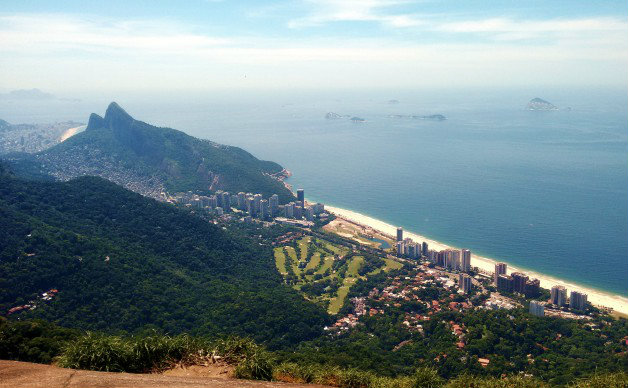
There’s also the hike to Morro da Urca—the hill connected to Sugarloaf Mountain. If you don’t want to pay for the cable car, you can walk up the trail, which begins at the Cláudio Coutinho running/walking path (another beautiful spot) near Praia Vermelha. The hike is easy, though quite steep, and takes about 30 minutes.
It’s not the same as reaching the top by cable car, but it’s beautiful! You can also walk up to this point and then take the cable car to the Sugarloaf.
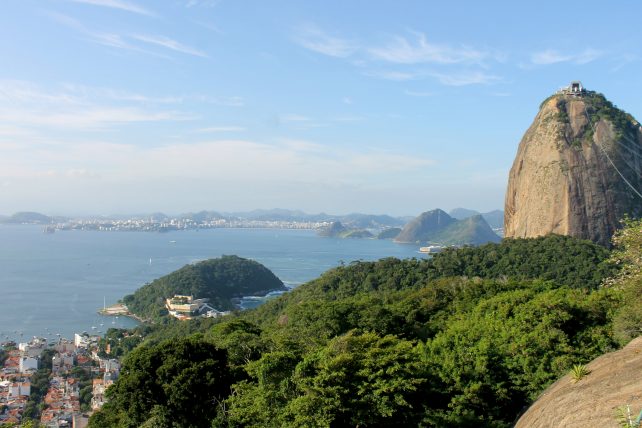

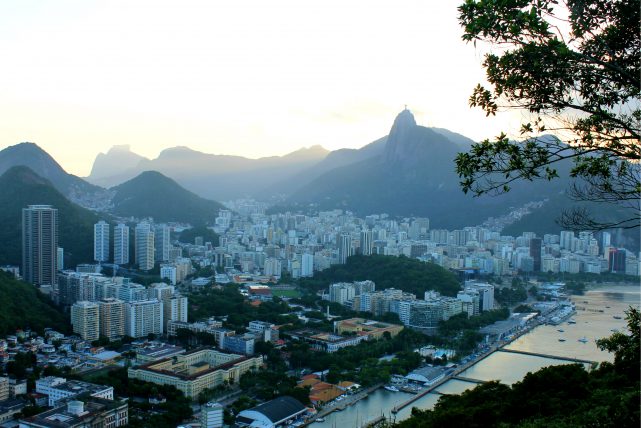
25. Mureta da Urca
Since you’re in Urca neighborhood, why not stop by Mureta da Urca? Every evening, people gather along this wall by the bay to enjoy the sunset and have a beer.
The most popular spot is in front of Bar Urca, but many people also go to the area known as “pobreta,” a few minutes away.
The nickname “pobreta” (which comes from the word “poor” – pobre) came about because, at this section of the wall at the beginning of Rua Marechal Cantuária, you can buy beers at Urca Grill, which has friendlier prices than its competitor.
The scenery there is similar to the most famous one, but I find it even prettier, with Christ the Redeemer in the background. Walking between the two bars is also lovely, and this is a fairly safe area.
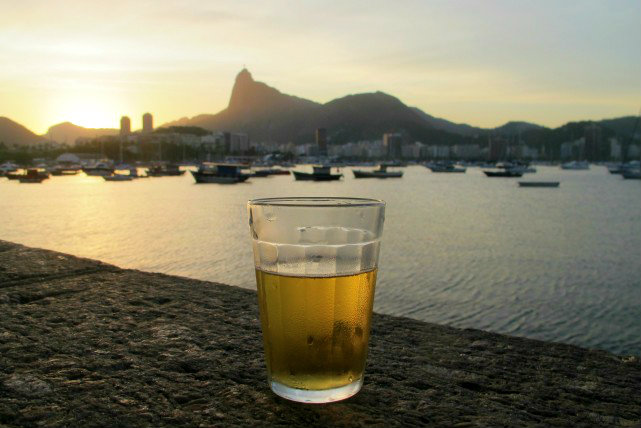
26. Lagoa Rodrigo de Freitas
Another charming place to relax by the water is Rodrigo de Freitas Lagoon. There, you can walk, cycle, ride a paddleboat, drink coconut water, have a picnic, skateboard, or just sit and enjoy the view.
27. Casa Museu Eva Klabin
Near the Lagoa, you’ll find the Eva Klabin House Museum, which houses the classic art collection of Eva Klabin. The collection includes over two thousand pieces, from Ancient Egypt to Impressionism.
Additionally, it’s worth admiring the house itself, where the collector lived for more than 30 years, serving as a snapshot of the life of Rio’s high society. Entry is free on weekends and holidays, and all visits are guided.
28. Parque da Catacumba
Another place with free entry near Rodrigo de Freitas Lagoon is the Parque Natural Municipal da Catacumba (Catacumba Park), an ecological reserve with easy trails leading to a viewpoint. There’s also an adventure park with zip lines and treetop paths, although this part is paid.
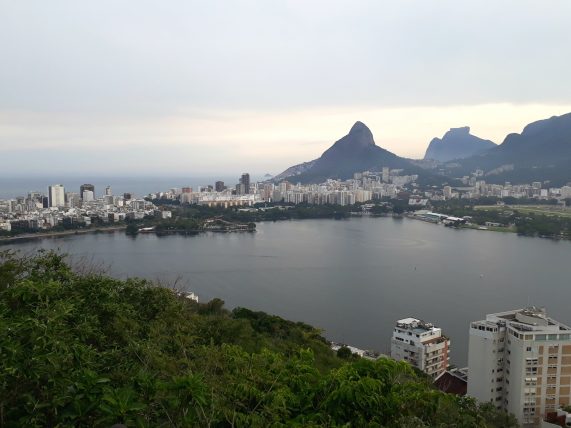
29. Palácio do Catete (Museu da República)
The Museu da República (Museum of the Republic) operates in Palácio do Catete (Catete Palace), built between 1858 and 1867 by the Baron of Nova Friburgo. In 1892, the palace was purchased by the federal government to house the Presidency of the Republic, when Rio was still the country’s capital.
The building witnessed important moments in national history, such as the wake of President Afonso Pena in 1909 and Getúlio Vargas’s suicide in 1954. It served as the seat of the Republican Government for nearly 64 years, during which 18 presidents used its facilities. In 1960, when the presidency was moved to Brasília, the palace became home to the Museum of the Republic.
Inside, you’ll find rooms reconstructed as they were, including dining rooms, banquet halls, bedrooms, and offices, along with rotating exhibits. Museum entry is free on Wednesdays and Sundays.
The palace also has a beautiful garden that often hosts events like small concerts and markets. I live nearby and love going there to read or have a picnic with friends. There are ponds with ducks and all.

30. Choro and samba performances
Looking for live music? Then dive in! Free things to do in Rio de Janeiro also include several “rodas” (group performances) of choro and samba, two musical rhythms very important in Rio.
Among the most traditional options are the choro at Praça General Glicério in Laranjeiras, Samba on Ouvidor Street in the city center, and the famous Samba at Pedra do Sal.
I also enjoy the Samba da Glória on Sundays, the choro at Bar do Serginho in Santa Teresa on Mondays, and the sambas and choros that happen almost every day at Bip Bip in Copacabana. Some others are sporadic, like Samba do Sacramento, which is great.
Check the updated schedule, as some of these only run once a week, and others may have stopped. There are also some very good paying options, like Samba do Trabalhador at the Renascença Clube on Mondays.
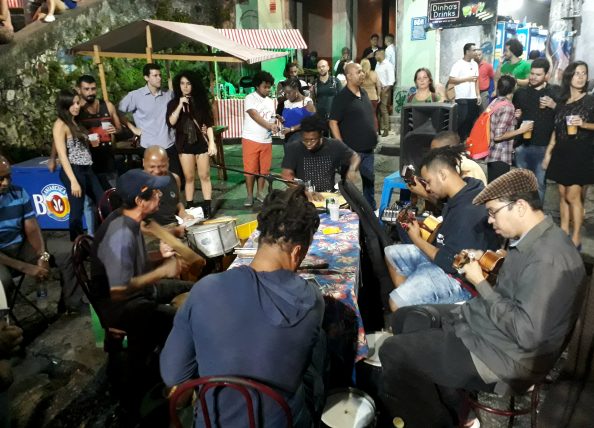
31. Street Markets
Another easy-to-find free attractions in Rio are the street markets. Many of them have been held periodically for years.
It’s worth checking out Praça São Salvador Market, Glória Market, and the Hippie Market in Ipanema, which take place on Sundays. The Flea Market in Praça XV (the biggest in South America), the General Glicério Street Market and the Lavradio Street Market, all on Saturdays, are also great. This is one of my favorite things to do in Rio, but it takes a bit of self control not to buy a lot of stuff!
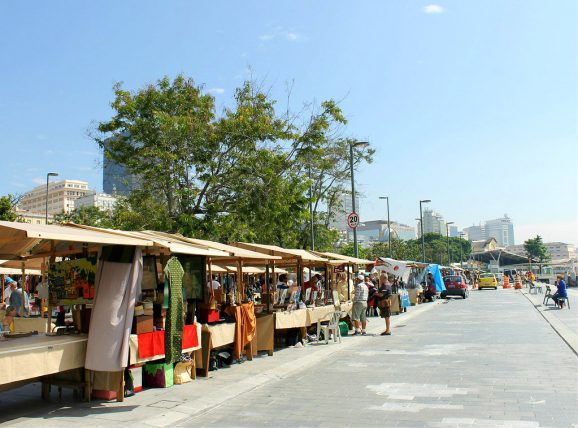
32. Gigóia Island
Tucked away in Barra da Tijuca, Gigóia Island is one of those places in Rio that make you forget you’re in a big city. Full of charming bars and restaurants, it’s perfect for a relaxed afternoon.
In a neighborhood made for cars, there’s this place without any motorized vehicles. Around Gigóia Island, the only traffic is the boats making the crossing to the island and, here and there, a jet ski.
You can easily get there by taking the subway to Jardim Oceânico station and then the boats that depart 2 minutes away from one of its exits. The boat ride costs about R$ 7, but you can also take a longer boat tour to see the surroundings, which is nice.
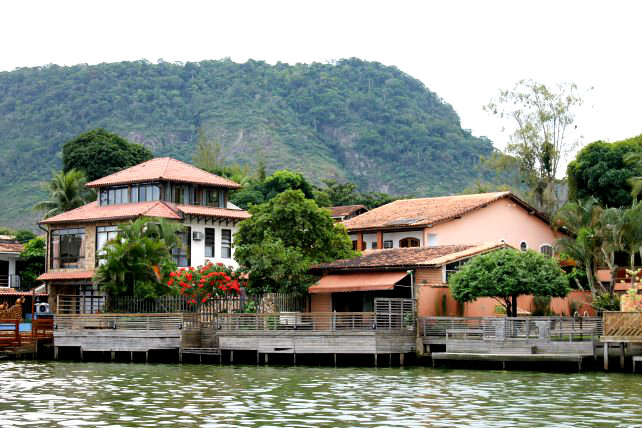
33. Museu de Arte Contemporânea de Niterói
I’m including this in the list of free things in Rio, but it’s actually located in the neighboring city, Niterói. The Museu de Arte Contemporânea – MAC (Museum of Contemporary Art) in Niterói is well-known for the building it’s housed in, designed by the famous Brazilian architect Oscar Niemeyer in the shape of a flying saucer.
Opened in 1996, the museum faces Guanabara Bay, with yet another of Rio’s stunning views. It houses a collection with around 1,300 works from the 1950s to the present, along with over 300 pieces in its own collection, the result of donations.
You can get there by ferry (it departs from Praça XV and it’s a lovely trip) or by bus. Entrance is free on Wednesdays.
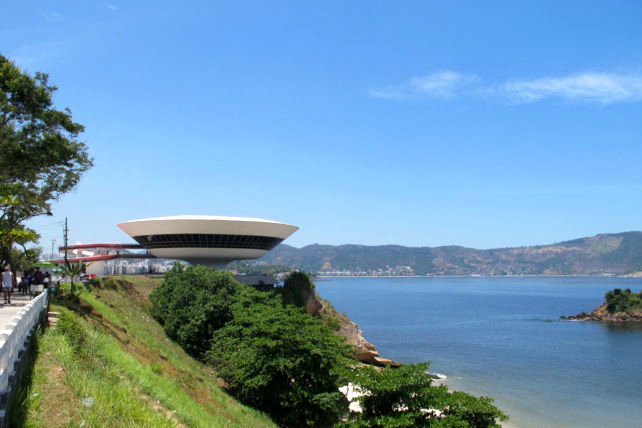
34. City Park in Niterói
If you go all the way to Niterói, I recommend adding the City Park (Parque da Cidade) to your itinerary. Perched high in the hills, this park offers a breathtaking panoramic view of Rio de Janeiro, with sights that stretch from Guanabara Bay to Christ the Redeemer and Sugarloaf Mountain. It’s a prime spot for sunsets.
In addition to the views, City Park is also a hotspot for paragliding, offering launch points for those looking to see the coast from the skies. Pack a picnic and enjoy the scenery, get something to eat at the café or just sit back and soak in the expansive landscape that includes both mountains and ocean.
Getting there requires a drive or a hike up the steep hill, but it’s well worth the journey.
35. Paquetá Island
Besides going to Niterói, another enjoyable ferry ride is to Paquetá, an island neighborhood in Rio that feels like a step back in time. It’s worth setting aside at least an afternoon to wander aimlessly around there, whether by bike or on foot, and admire the historic houses and the Guanabara Bay around you. It’s easy and cheap to rent bikes there.
My favorite places there are the Bird Cemetery and Darke de Mattos Park, at the edge of José Bonifácio Beach. You should also check out Ponte da Saudade (which is actually not a bridge but a lovely, melancholic pier) and Moreninha Rock, said to have inspired a famous Brazilian romance, A Moreninha.
And of course, the beaches – we are on an island, after all. In addition to Moreninha Beach, other popular ones are Gaivotas Beach, São Roque Beach, Buraco Beach, and Moema and Iracema Beaches. They’re not all good for swimming, so check the INEA website if you’re thinking about going in the water. Nonetheless, it’s super nice to just sit in one of the restaurants on the shore and have lunch or a few drinks.
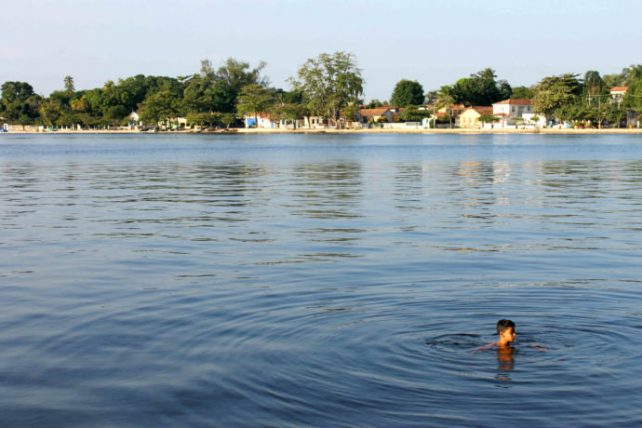
36. Parque Guinle
Located in the Laranjeiras neighborhood, Guinle Park is a nice off the beaten path location in Rio. It’s not very touristy, making it a great option for those looking for tranquility.
The space isn’t very large, but it has beautiful gates and landscaping, as well as a pretty pond with ducks and geese. Even the buildings surrounding the park are quite charming. Some of them were made with cobogós, a Brazilian type of bricks with holes to allow the wind and light in.
37. Oi Futuro
Near Guinle Park, you’ll also find the Oi Futuro Cultural Center, which houses the interesting Museum of Telecommunications. The venue often hosts great free contemporary art exhibitions and has a library specializing in art and technology.
38. Aterro do Flamengo
After visiting Oi Futuro, head to Aterro do Flamengo Park. I love just sitting there, admiring the sea and watching the planes arrive and depart from Santos Dumont Airport, which is close by. The quality of water in this area used to be bad, but after some changes in the city’s sewage system it became much cleaner, and it’s allowed to swim there in most days.
If you’re more active, you can take advantage of the area’s excellent sports facilities. You can go running, biking, skateboarding, or rollerblading, or play footvolley, tennis, basketball, or soccer. It’s also a great place for a picnic.
On Sundays, the car lanes next to the park are closed to traffic and people take over. I love skating there and watching people have fun.
39. Feira de São Cristóvão
More commonly known as Feira de São Cristóvão, the Luiz Gonzaga Municipal Center of Northeastern Traditions is basically a little slice of Brazil’s Northeast in Rio de Janeiro.
The place is essentially a covered pavilion filled with stalls selling typical foods (to take home or eat in restaurants), drinks, and crafts from the region, accompanied by typical music like forró. On weekends, the place also operates at night, with bars and karaoke, though entry is charged during those hours.
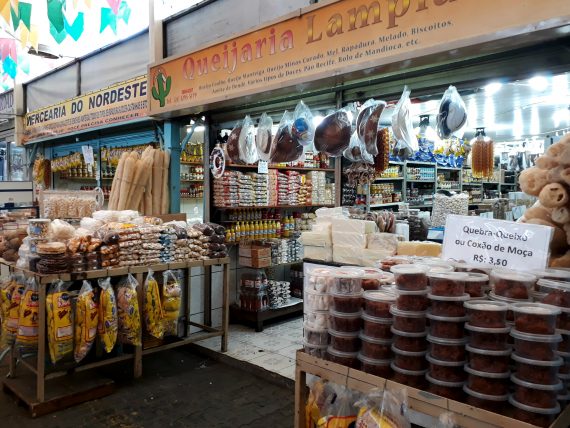
40. Quinta da Boa Vista
Also in the São Cristóvão neighborhood, you’ll find Quinta da Boa Vista, one of Rio de Janeiro’s largest urban parks, which is rarely visited by tourists. It was the official residence of the royal family from 1808 until the Proclamation of the Republic in 1889. Many gardens, lakes, gates, and statues have been preserved, along with the former royal palace, which housed the Museu Nacional (National Museum). It’s a great place for a picnic, and you can rent a kayak to paddle on the little lake.
A few years ago, a major fire that destroyed much of the Museum, which was very sad, since it’s Brazil’s oldest scientific institution and was the largest natural history and anthropology museum in Latin America, integrated into the academic structure of the Federal University of Rio de Janeiro. I visited in 2017 and was impressed by the collection. It’s currently under restoration.
41. Mercadão de Madureira
And I wrap up this list of free things to do in Rio de Janeiro with a very non-touristy thing: Mercado de Madureira (Madureira Market), with is also in the North Zone of the city, like São Cristóvão Neighborhood.
Considered the city’s most comprehensive popular shopping center, it has 580 stores offering all kinds of goods, attracting around 100,000 people daily. It’s well-organized, with escalators and air conditioning, but not fancy.
You can find almost anything you want there: jewelry, cosmetics, medicinal herbs, flowers, party supplies, costumes, decor items, drinks, food, and many stores dedicated to religious items. It’s a fun place to visit if you’re into local culture and typical daily life stuff.
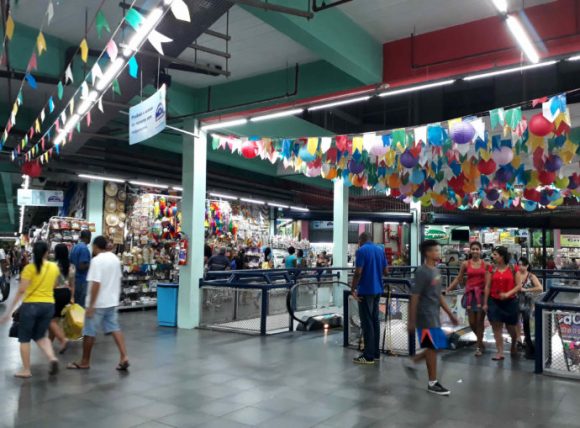
I hope you enjoyed these recommendations of free attractions in Rio! If you need help planning your trip or would like to take Portuguese lessons, reach out on [email protected].

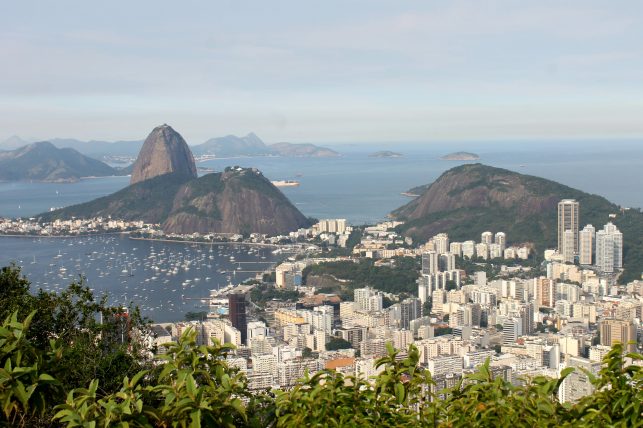


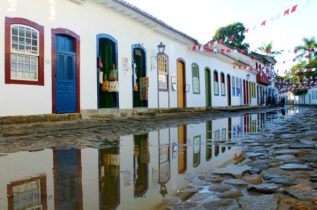












0 Comentários